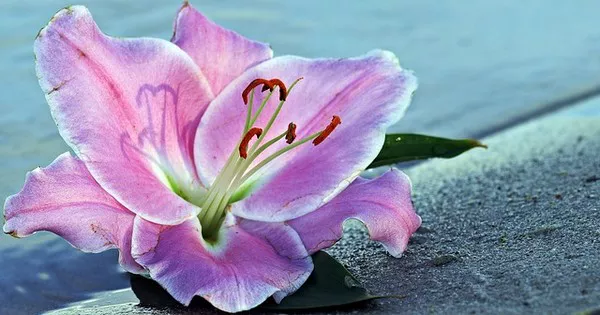Lilies, with their breathtaking blooms and graceful elegance, have been a cherished addition to gardens for centuries. Whether you’re an experienced gardener or a novice with a green thumb, planting lily flowers can be a rewarding endeavor. This comprehensive guide aims to provide you with step-by-step instructions on how to plant lily flowers and cultivate a garden filled with these enchanting blossoms.
Choosing the Right Lily Variety:
Before diving into the planting process, it’s crucial to select the right lily variety for your garden. Lilies come in various types, including Asiatic, Oriental, Trumpet, and Tiger lilies, each with its unique characteristics. Consider factors such as bloom color, size, and fragrance to choose the variety that best complements your garden’s aesthetic.
Selecting an Ideal Planting Site:
Lilies thrive in well-drained soil and require a location with ample sunlight. Choose a site that receives at least 6-8 hours of sunlight daily. Additionally, lilies prefer slightly acidic to neutral soil with a pH range between 6.0 and 6.5. Ensure the chosen area has good air circulation to prevent fungal diseases and adequate space for the lilies to grow and spread.
Preparing the Soil:
Prepare the soil well in advance of planting to provide the lilies with a nutrient-rich environment. Start by loosening the soil to a depth of 12-18 inches using a garden fork or tiller. Incorporate organic matter, such as well-rotted compost or aged manure, to improve soil fertility and drainage. This step is crucial for creating a hospitable environment for lily bulbs to establish strong roots.
Planting Lily Bulbs:
Lily bulbs are typically planted in the fall, allowing them to establish roots before the winter frost sets in. Follow these steps for successful lily bulb planting:
Digging Holes: Dig individual holes for each bulb, ensuring a depth that is three times the bulb’s height. Space the holes according to the recommended planting distance for the specific lily variety.
Orientation: Place the bulbs in the holes with the pointed end facing upward. Lilies have a natural tendency to grow towards the surface, and planting them upside down may hinder their growth.
Soil Placement: Backfill the holes with soil, gently pressing it around the bulbs to eliminate air pockets. Water the area thoroughly to settle the soil and initiate root growth.
Mulching and Watering:
Applying a layer of mulch around the planted lilies helps retain moisture, regulate soil temperature, and suppress weed growth. Use organic mulch, such as straw or shredded bark, and apply it to a depth of 2-4 inches. Water the lilies consistently, keeping the soil evenly moist but not waterlogged. Deep, infrequent watering is preferable to shallow, frequent watering, as it encourages the development of deep and robust root systems.
Fertilizing:
Lilies benefit from regular fertilization to support healthy growth and vibrant blooms. Apply a balanced, slow-release fertilizer in the spring when new shoots emerge and again after the lilies finish blooming. Follow the recommended dosage on the fertilizer package, as over-fertilization can be detrimental to the plants.
Supporting Tall Varieties:
Tall lily varieties, such as Trumpet and Oriental lilies, may require staking to prevent them from bending or breaking under the weight of their blossoms. Install stakes early in the growing season, positioning them close to the emerging shoots. Use soft ties to secure the stems to the stakes, allowing room for natural growth while providing necessary support.
Dealing with Pests and Diseases:
Lilies are susceptible to certain pests and diseases, including aphids, lily beetles, and fungal infections. Monitor your plants regularly for any signs of infestation or disease. Insecticidal soap or neem oil can be used to control pests, while proper spacing and good air circulation help prevent fungal issues. Remove and destroy any infected or infested plant material promptly to prevent the spread of problems.
Caring for Lilies after Blooming:
Once the lilies have finished blooming, deadhead the flowers by removing the spent blooms. This not only maintains the plant’s aesthetic appeal but also directs energy back into bulb development. Allow the foliage to yellow and wither naturally before cutting it back to ground level. This allows the bulb to absorb nutrients for the next growing season.
Conclusion:
Planting lily flowers is a delightful journey that rewards gardeners with stunning blooms and a touch of timeless elegance. By choosing the right variety, preparing the soil diligently, and providing proper care, you can cultivate a lily-filled garden that will be the envy of your neighborhood. Follow the steps outlined in this comprehensive guide, and soon you’ll be enjoying the beauty and grace that lilies bring to your outdoor space.


